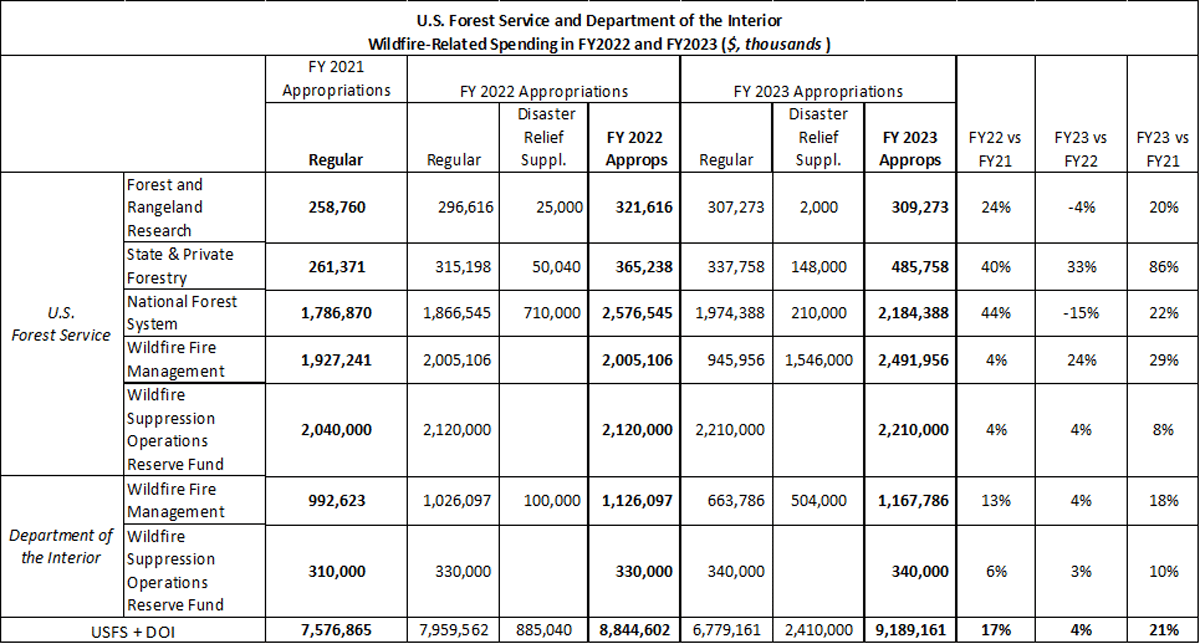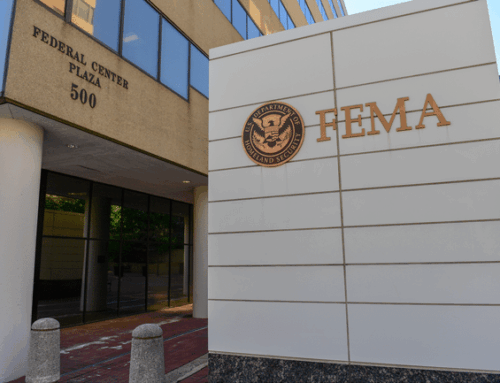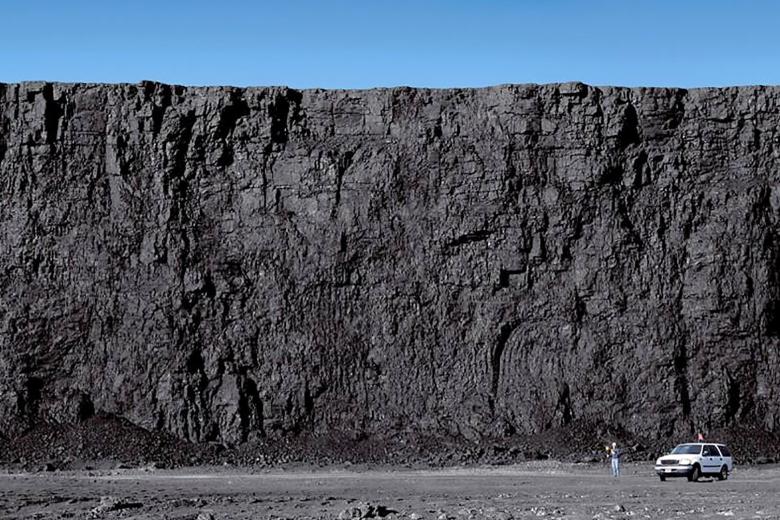The FY2023 Omnibus Appropriations bill (P.L. 117-168) includes wildfire-related funding for the U.S. Forest Service (USFS) (within the U.S. Department of Agriculture (USDA)) and the Department of the Interior (DOI). The bill includes both regular appropriations and disaster relief supplemental appropriations.
A large portion of federal wildfire funding is allocated through the Wildland Fire Management (WFM) accounts within USFS and DOI. Other programs with the U.S. Forest Service -including Forest and Rangeland Research, State & Private Forestry, and the National Forest System- also contribute to the prevention and suppression of wildfires.
Some topline takeaways:
- Overall, FY2023 wildfire-related fundings stayed relatively flat compared to FY2022 levels. Compared to FY2021, FY2023 regular and emergency appropriations are still significantly higher across all line items. Even without the disaster relief supplemental allocated in the respective fiscal years, FY2022 and FY2023 non-WFM fire spending received a bump from FY2021.
- The FY23 Omnibus and Emergency Supplemental are not the only sources of funding for FY2022 and FY2023 USFS and DOI wildfire programs. The Infrastructure, Investment and Jobs Act (IIJA, P.L. 117-58) also made significant investments in wildfire risk reduction and resilience for FY2022-FY2026. The chart above does not include IIJA funding but does include regular and disaster relief supplemental. Additionally, wildfire-related spending comes through other sources than USDA and DOI.
USFS and DOI Program Highlights:
- Forest and Rangeland Research includes research programs within the US Forest Service. This spending line item contains programs that include direct wildfire spending, such as Wildland Fires and Fuels R&D, and others that are wildfire-related spending that contribute to our nation’s scientific understanding of forest health and management. This program received a 4% decrease in the FY23 omnibus over FY 2022 appropriations.
- State and Private Forestry funds the U.S. Department of Agriculture’s national fire capacity and rural fire capacity, which address state and local communities’ ability to address wildfires, in addition to other wildfire-related spending relating to the management of non-federal forests. This program received a 33% increase in the FY23 omnibus over FY 2022 enacted levels.
- The National Forest System funds programs that involve management of National Forest land, including those that impact wildfires such as Hazardous Fuels, Grazing Management, and Forest Products. This program received a 15% decrease in the FY23 omnibus over FY 2022 enacted levels.
- Wildland Fire Management funds the personnel, equipment, and immediate post-fire risk mitigation necessary for wildfire suppression on federal lands. The U.S. Forest Service WFM was appropriated nearly $2.5 billion in the FY 2023 omnibus, a 24% increase over regular appropriations last year. The DOI WFM account was appropriated $1.17 billion in the FY 2023 omnibus, an increase of 4% over regular and supplemental appropriations allocated last year.
- The Wildfire Suppression Operations Reserve Fund, also known as the wildfire adjustment account, is a new budget authority given to USFS and DOI from FY2020 to FY2027 to be tapped when suppression funding has been exhausted. The budget authority is capped at $2.25 billion for FY2020, increasing by $100 million each fiscal year through FY2027. The FY23 reserve fund with USFS and DOI adds up to $2.55 billion, which means that Congress appropriated the maximum amount allowed for the adjustment account for FY2023.
As wildfires have grown both in size and frequency, federal spending to address the problem has ballooned. Federal investments are vitally important to protect communities and decrease future fire threats, but there must be more transparency and accountability in spending programs and increased focus on landscape and community resilience. TCS will continue to follow USFS and DOI spending allocated in the IIJA and annual budget and appropriations process.











